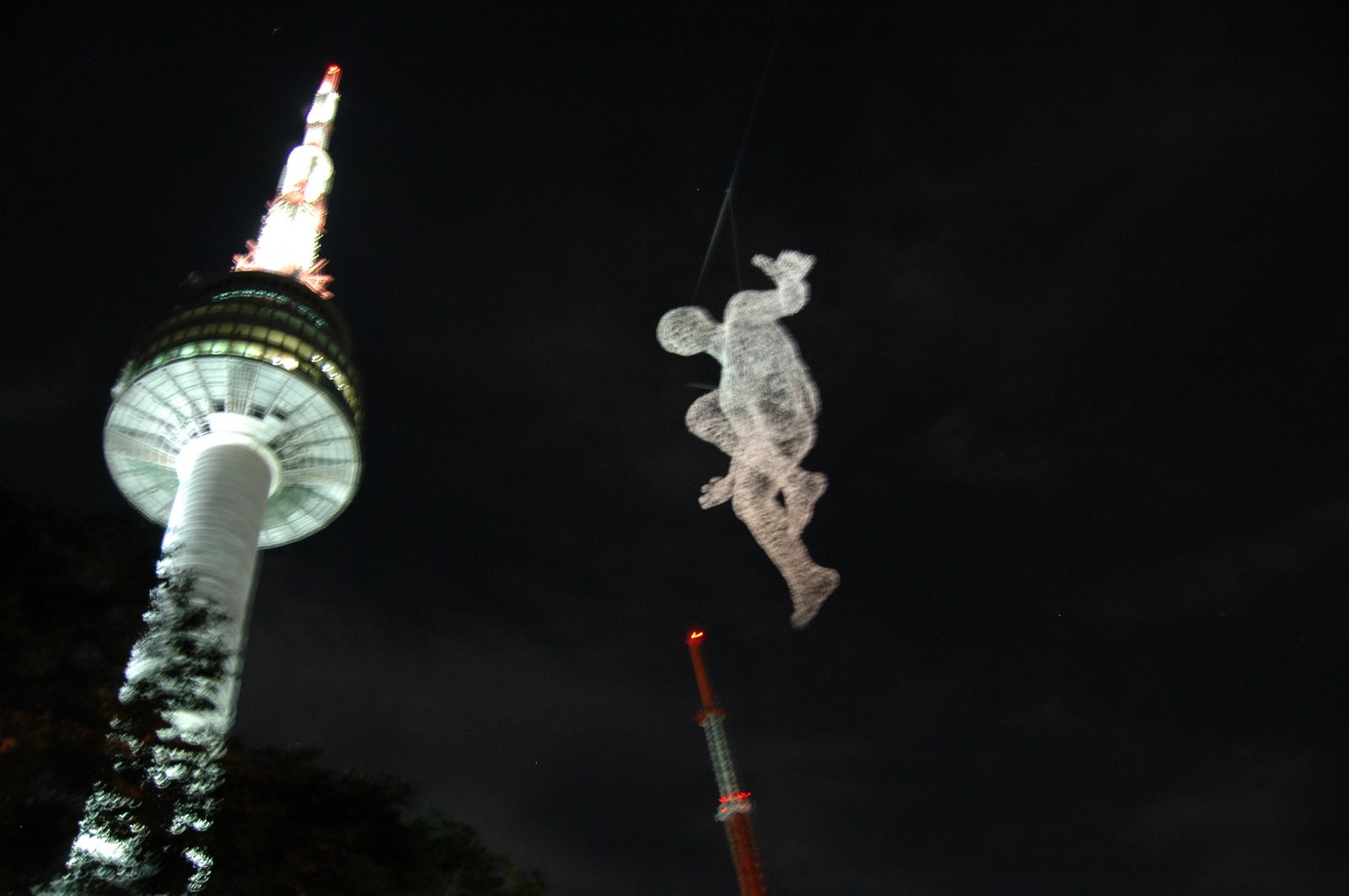Monday, October 08, 2007
The Table is the Plate
I have been hiking in the surrounding mountains all day and I am hungry. I find a good clean restaurant. Inside, I spread out the mats on the wood floor and sit down cross-legged at the knee-high table. I open the wooden box and take out a silver spoon and chopsticks.
I order dolsat bibimbap. Before the main course comes, the woman brings me a warm wet towel to wipe my hands and neck and sets out the side dishes. The side dishes, or banchan, are numerous and varied—-of course there is the red, fermented-cabbage kimchi, but beyond that I sample from mackerel cooked but left intact, fried tofu squares, and vegetables covered in red pepper paste or sesame oil.
My food comes in a hot black stone pot. A raw egg rests in the middle of sliced mushrooms, dried seaweed, chopped zucchini, soybean sprouts, and white radish—-all atop a mound of rice. The woman makes the motion of stirring and I comply. The hot pot cooks the egg and I add a little red pepper paste for spice.
I chose the bibimbap not so much for the taste—-I think other Korean dishes taste better—-but for the way it makes me feel. That’s something I find often in Korean food. Many of the meals are energizing rather than crippling. They’re light-—based around vegetables and broths, and some incorporate ginseng as an ingredient, which is a natural stimulant.
Sam gye tang comes in a similar pot. It’s a game hen, or “young chicken,” boiled with dates, rice, ginseng and chestnuts. Koreans traditionally eat it on the hottest day of the year. Compared to Westerners, their logic works in reverse. Where an American would reach for a banana split in mid-July, they actually make themselves hotter to lessen the severity of the outside temperature. This is like chicken noodle soup or menudo-—intended to make you feel better. If you’re already feeling good than you win again.
Koreans eat a lot of meat. They go heavy on pork and beef, but also eat chicken, fish, and have many restaurants that specialize in duck. Males occasionally bond over dog, but it’s difficult to find an admitted dog eater. In my eleven months I have yet to see a dog restaurant. I have eaten American beef twice since Korea lifted the import ban, and both times found it superior in quality to its Australian counterpart.
On the coast, along the harbors and on the piers, raw seafood restaurants abound. A few weeks ago, I met friends in Sokcho, a city on the East Sea. We walked under awnings past large round tubs of swimming sea life—-crab, shellfish, sea anemone, and many types of fish I am not familiar with—-basically whatever they can net. We watched as a woman hoisted an alive, two-and one-half-foot octopus out of a tub, turned its head inside out and tore out its ink bag. We ate three types of fish and a squid that was so fresh it still had life in its suckers.
The most enjoyable aspect of eating in Korea is the experience of shared food. We sit around the same grill built into the center of the table, with everyone adding meat or vegetables as they see fit. We dip our chopsticks into the banchan if we’re bored with the main course. Often we don’t even have our own plates. The table is the plate.
Subscribe to:
Posts (Atom)





